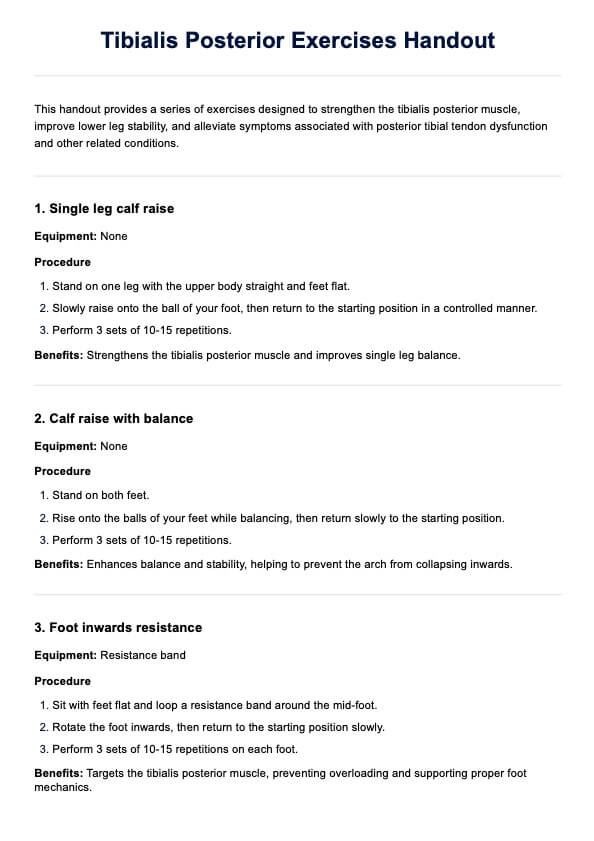If the posterior tibialis muscle is weak, it can lead to a condition known as posterior tibial tendon dysfunction (PTTD). This can cause pain and discomfort in the foot and ankle, making it difficult to walk or stand for long periods of time.

Tibialis Posterior Exercises Handout
Get our handout to help manage posterior tibial tendon dysfunction, strengthen the tibialis posterior, and effectively reduce shin pain.
Tibialis Posterior Exercises Handout Template
Commonly asked questions
Weak posterior tibialis can be caused by various factors such as overuse or strain on the muscle, age-related degeneration, obesity, flat feet or fallen arches, injury or trauma to the foot or ankle, and certain medical conditions such as rheumatoid arthritis.
Exercises that can help strengthen the tibialis posterior include heel raises, toe curls, and resistance band exercises. It is important to gradually increase the difficulty and intensity of these exercises to avoid injury and ensure proper strengthening of the muscle.
EHR and practice management software
Get started for free
*No credit card required
Free
$0/usd
Unlimited clients
Telehealth
1GB of storage
Client portal text
Automated billing and online payments











